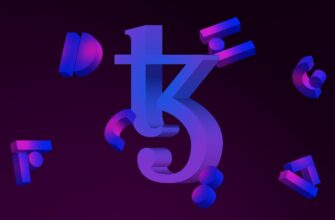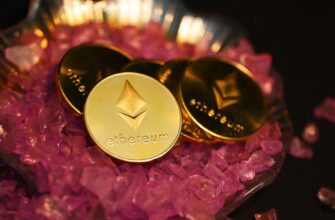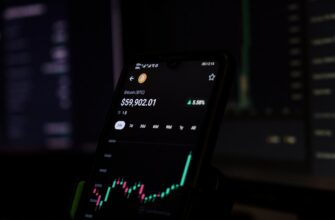- Introduction to Crypto NXT
- What is Crypto NXT?
- Core Features of the NXT Blockchain
- Decentralized Asset Exchange
- Data Cloud & Messaging
- Voting & Governance Systems
- Alias System
- How NXT’s Proof-of-Stake Works
- Buying and Storing NXT
- Where to Buy
- Storage Solutions
- NXT vs. Modern Blockchains
- Future Developments and Use Cases
- Frequently Asked Questions (FAQ)
- Is NXT still active in 2023?
- Can I earn passive income with NXT?
- What’s the difference between NXT and Ardor?
- How secure is the NXT blockchain?
- Where can I track NXT price and metrics?
- Conclusion
Introduction to Crypto NXT
Crypto NXT (often stylized as Nxt) represents a groundbreaking evolution in blockchain technology. Launched in 2013, it pioneered the Proof-of-Stake (PoS) consensus mechanism, offering an energy-efficient alternative to Bitcoin’s Proof-of-Work. Designed as a flexible platform for decentralized applications, NXT introduced features like asset trading, data storage, and voting systems years before they became industry standards. This guide explores NXT’s technology, use cases, and enduring relevance in the crypto ecosystem.
What is Crypto NXT?
NXT is an open-source blockchain platform and cryptocurrency created by an anonymous developer known as BCNext. Unlike Bitcoin, NXT uses pure Proof-of-Stake, where users “forge” new blocks by staking existing coins instead of energy-intensive mining. Key characteristics include:
- 100% PoS Consensus: Eliminates mining farms, reducing energy consumption by 99% compared to Bitcoin
- Built-in Features: Native support for asset exchange, messaging, and voting without requiring smart contracts
- Scalability: Processes transactions in 60 seconds with minimal fees
- Fixed Supply: 1 billion NXT coins created at genesis, with no inflation
Core Features of the NXT Blockchain
Decentralized Asset Exchange
NXT’s built-in Asset Exchange allows users to create and trade custom tokens representing assets like stocks, loyalty points, or real estate. Transactions settle on-chain in seconds with negligible fees.
Data Cloud & Messaging
The Data Cloud feature enables encrypted data storage directly on the blockchain, while the messaging system supports private communications between wallets, facilitating secure P2P interactions.
Voting & Governance Systems
NXT includes native voting mechanisms for decentralized decision-making. Projects can conduct polls with tamper-proof results recorded on-chain.
Alias System
Users can register human-readable aliases (e.g., “MyBusiness”) to replace complex wallet addresses, simplifying transactions.
How NXT’s Proof-of-Stake Works
NXT’s forging process secures the network through economic incentives:
- Users stake NXT coins in their wallets
- The algorithm selects forgers based on stake size and randomization
- Forgers validate transactions and create new blocks
- Rewards come from transaction fees (no new coin creation)
This model encourages long-term holding while maintaining network security with minimal energy use.
Buying and Storing NXT
Where to Buy
- Exchanges: Bittrex, Poloniex, and HitBTC list NXT/BTC pairs
- Brokers: Platforms like Changelly offer direct swaps
Storage Solutions
- Official NXT Client: Downloadable desktop wallet with full node capabilities
- Mobile Wallets: Lightweight options like NXT Mobile for iOS/Android
- Hardware Support: Compatible with Ledger devices via third-party interfaces
Always enable two-factor authentication and store recovery phrases offline.
NXT vs. Modern Blockchains
| Feature | NXT | Ethereum | Cardano |
|---|---|---|---|
| Consensus | Pure PoS | PoW → PoS | PoS |
| Launch Year | 2013 | 2015 | 2017 |
| Smart Contracts | Limited | Advanced | Advanced |
| Built-in DEX | Yes | No | No |
While newer platforms offer enhanced programmability, NXT remains notable for its operational efficiency and pioneering role in PoS adoption.
Future Developments and Use Cases
Though development slowed after the 2016 launch of its successor Ardor, NXT continues to serve niche applications:
- Microtransactions: Low fees enable nano-payments for content and services
- Supply Chain Tracking: Immutable product history recording
- DAO Governance: Community voting for decentralized organizations
- Educational Tool: Demonstrates foundational PoS mechanics
Frequently Asked Questions (FAQ)
Is NXT still active in 2023?
Yes, the network remains operational with consistent block production. However, primary development shifted to Ardor, its child chain project.
Can I earn passive income with NXT?
Absolutely. By staking coins in your wallet, you participate in forging and earn transaction fees. Returns depend on network activity and your stake size.
What’s the difference between NXT and Ardor?
Ardor is NXT’s evolutionary successor featuring parent-child chain architecture for improved scalability. NXT operates as a standalone chain, while Ardor processes transactions for multiple child chains.
How secure is the NXT blockchain?
NXT has never suffered a 51% attack. Its PoS design requires attackers to acquire over 50% of all coins—economically impractical for established networks.
Where can I track NXT price and metrics?
Use platforms like CoinMarketCap, CoinGecko, or the official NXT Blockchain Explorer for real-time data on price, transactions, and network health.
Conclusion
Crypto NXT’s legacy as a PoS pioneer continues to influence blockchain design nearly a decade after launch. While no longer the most technically advanced platform, its energy efficiency, built-in features, and operational stability make it a valuable case study in sustainable blockchain architecture. As the crypto space evolves, NXT remains a testament to the enduring potential of Proof-of-Stake consensus.








